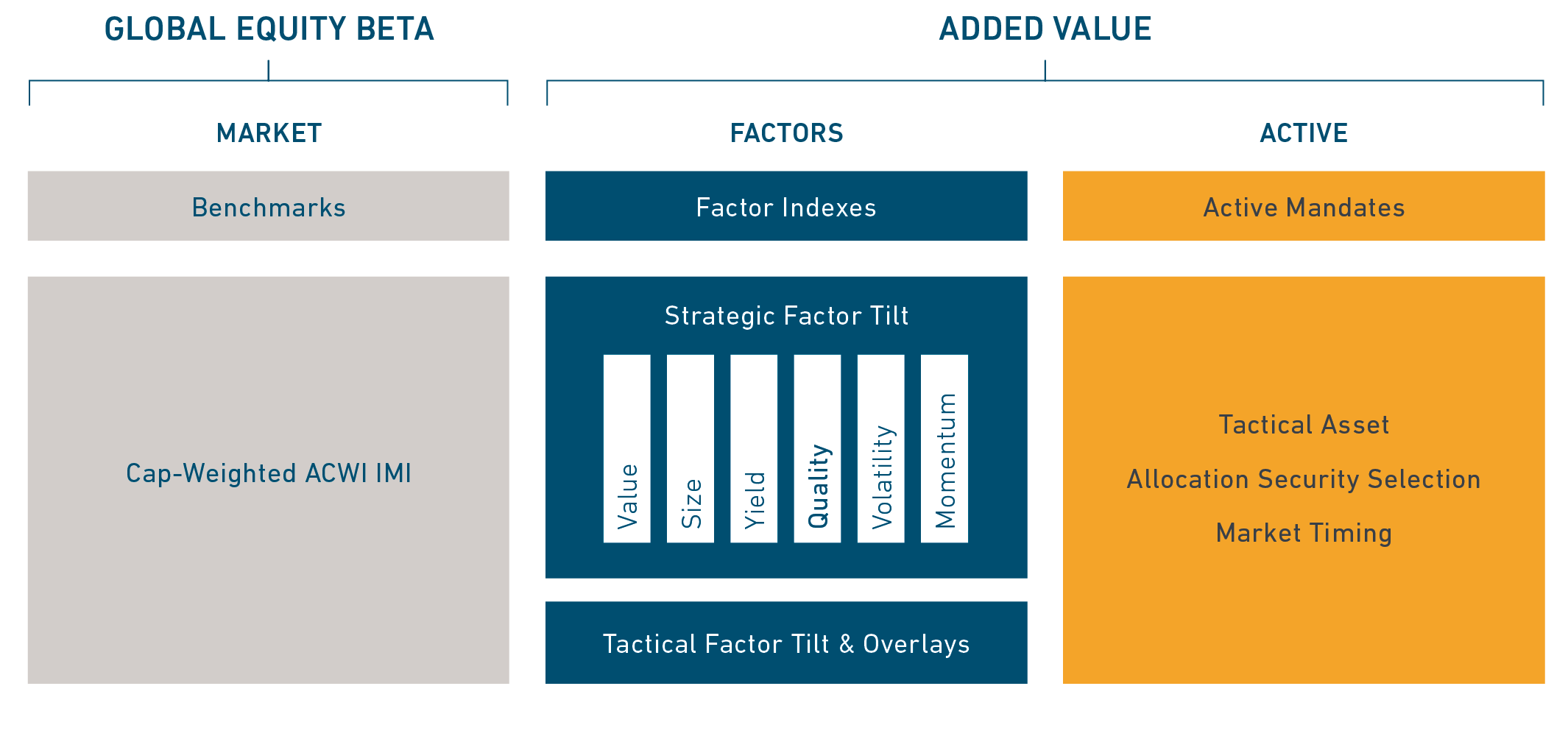
Equity factor investing aims to capture exposures to different equity risk premia. Factor modeling and factor investing are rooted in the Capital Asset Pricing Model (CAPM) dating from the mid-1960s, Arbitrage Pricing Theory from the 1970s and Fama and French’s three-factor model from the 1990s. In general, the term “factor” refers to any characteristic of a group of securities that is important in explaining their risk and returns.
While many factors have been shown to have statistical significance in explaining variations in risk and returns, not all of these factors offer premia relative to CAPM pricing. Factor premia represent exposure to systematic sources of risk that have historically earned a long-term premium. We have so far identified six factors that meet this criterion: Value, Low Size, Low Volatility, High Dividend Yield, Quality and Momentum. These factors have been empirically tested over years of academic research.
Factor Investing in the Active/Passive Spectrum

MSCI has created a family of factor indexes that are designed to reflect the performance of these six equity factors. Factor allocations can be implemented passively using factor indexes; they allow exposure to factors in a cost-effective and transparent way.
However, factor indexes should not be viewed as replacements for market-capitalized indexes, which are designed to represent the full opportunity set. Factor indexes aim to represent an active bet against the neutral market-cap index, and investors should rely on their own views about what explains the historical premium and whether it is likely to persist.
Factor returns have also been highly cyclical. However, factors historically have had low correlations to each other. Combining factors has offered diversification benefits that have reduced periods of underperformance over time. Future results may differ materially.
There are two camps in the debate over what drives factor returns. This debate is not just theoretical; it bears on whether such excess returns are likely to persist in the future.
One camp views markets as efficient and factors as reflecting “systematic” sources of risk — this is consistent with “efficient markets theory,” which assumes markets are efficient and investors are rational.
The other camp believes investors either exhibit behavioral biases due to cognitive or emotional weaknesses (a view rooted in behavioral finance) or are subject to different constraints, such as time horizons or the ability to use leverage.
For institutional investors who subscribe to the “systematic risk” perspective, a factor can potentially persist indefinitely if it actually compensates for bearing undiversifiable risk.
For those who subscribe to the “behavioral bias” perspective, a factor can potentially persist as long as there are strong reasons why investors will continue to exhibit the behavioral biases in question and their actions are too costly to be arbitraged away by rational investors.
While increasing popularity could diminish future returns, investors should keep in mind that increased capital flows going into a popular strategy may produce a tailwind to the strategy’s performance over the medium term, prior to any possible future reversal.
Read the paper, “Foundations of Factor Investing."
